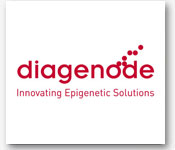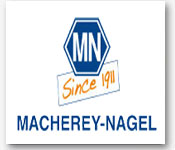Theme: Implications & Impacts of Genomic Advances on Global Health
Genomics 2015
Genomics-2015 conference welcomes attendees, participants, students and exhibitors from all over the world to San Antonio, USA. We are delighted to invite you all to attend and register for the “3rd International Conference on Genomics and Pharmacogenomics (Genomics-2015)” which is going to be held during September 21-23, 2015 in San Antonio, USA. Genomics events San Antonio deals with current issues in the fields of Next generation sequencing, Pharmacogenomics, Clinical Genomics, Cancer Genomics, Bioinformatics and Biotechnology which are certainly a key issue in the modern perspective and through this conference we will get all relevant information regarding the recent achievements in the respective field. This Genomics & Pharmacogenomics 2015 Conference will provide a perfect platform to all the Doctors, Researchers, Business Delegates and Scientists to approach and deliver all the attendees about the latest scientific advancements on the respective sphere.
OMICS International Organizes 300+ International Conferences every Year across USA, Europe & Asia with support from 1000 more scientific societies and Publishes 400+ Open access journals which contains over 30000 eminent personalities, reputed scientists as editorial board members.
San Antonio is the fastest growing of the top 10 largest cities in the United States from 2000 to 2010, and the second from 1990 to 2000. The San Antonio 1000 Cancer Genome Project was established to accelerate the development of a cure for cancer by conducting whole genome sequencing of cancerous and normal tissues. The global genomics market was valued at an estimated $11.11 billion in 2013 and is expected to grow at a CAGR of over 12.0% from 2013 to 2018. The largest segment in the products market was the consumables segment, which accounted for over 60% of the total market revenues. The PCR segment constitutes the largest technology segment in the global market.
The previous conferences on Genomics & Pharmacogenomics which were held at Chicago, USA and North Carolina, USA have explained Research& advancements in Genomics gained so much of interest for eminent scientists all over the world in the field of Genomics & and its allied areas. Now it is the time for the 3rd International Conference on Genomics and Pharmacogenomics to address the theme “Implications and Impacts of Genomic Advances on Global Health” which will be held from September 21-23, 2015 at San Antonio, USA.
For more details, please visit: Genomics Market Analysis
Track 1: Cancer Genomics :
Cancer Genomics is the study of genetic mutations responsible for cancer, using genome sequencing and bioinformatics. Clinical genomics is to improve cancer treatment and outcomes lies in determining which sets of genes and gene interactions affect different subsets of cancers. International Cancer Genome Consortium (ICGC) is a voluntary scientific organization that provides a forum for collaboration among the world's leading cancer and genomic researchers.
Cancer Genomics study is being supported by more than 50+ national genetic societies. American Society of Human Genetics (ASHG), National Society of Genetic Counselors (NSGC), American College of Medical Genetics (ACMG), Canadian College of Medical Geneticists, College Canadian de Généticiens Médicaux (CCMG), Association of Genetic Nurses and Counselors (AGNC), United Kingdom, Association of Clinical Cytogeneticists(ACC), British Society for Human Genetics (BSHG), Armenian Society of Human Genetics, Austrian Society of Human Genetics, Belgian Society of Human Genetics, British Society of Genetic Medicine, Bulgarian Society of Human Genetics.
The key players in the cancer/tumor profiling market are Boreal Genomics Inc. (U.S.), Caris Life Sciences (U.S.), Genomic Health Inc. (U.S.), Illumina Inc. (U.S.), Life Technologies Corporation (U.S.), NeoGenomics Laboratories (U.S.), Oxford Gene Technology Ltd. (U.K.), Precision Therapeutics Inc. (U.S.), bioTheranostics (U.S.), Proteome Sciences PLC (U.K.), Agendia (The Netherlands), Nanostring Technologies (U.S.), Rational Therapeutics (U.S.), Oncopath Laboratories (U.S.), and RiboMed Biotechnologies Inc.(U.S).The global cancer/tumor profiling market was valued at $13.30 billion in 2012. At the end of 2013, the market is estimated to be $14.99 billion and is poised to reach around $35 billion by 2018, growing at a CAGR of 18.50% from 2013 to 2018. National Institutes of Health awards total approximately $6.7 million in the first year and, if funding remains available, approximately $27 million in total.
Track 2: Functional Genomics
Functional Genomics use vast wealth of data produced by genomic and transcriptomic projectstodescribe gene functions and interactions. Trends in Functional Genomics are Affymetrix emerged as an early innovator in this area by inventing a practical way to analyze gene function as a system. NimbleGen Systems and Febit, are developing fabricated microarrays that are produced using a micro mirror based, mask less system. Texas Instruments developed the micro mirrors that direct light onto specific areas of a grid to activate the DNA synthesis reaction and elongate oligonucleotide chains. BioRobotics, Genetix, Genomic Solutions, and others offer a wide range of products needed to manufacture arrays. Applied Biosystems, PerkinElmer, Qiagen, and Zymark Corporation manufacture automated work stations and robotic systems to fully automate routine laboratory procedures. Invitrogen, PanVera, and Roche Applied Science, have developed complete biochemical and cellular assays that are compatible with high throughput systems Applied Bio systems offers a wide range of core instruments and systems necessary for functional genomics, such as DNA sequencers and synthesizers.
American Society of Transplant Surgeons Up to $100,000 per year ($50,000 in cash and up to $50,000 in-kind) for 2 years. For purposes of this grant, in-kind support is limited to the cost of assays. Genomics Market in the US 2014-2018 and Global Genomics Market 2014-2018 research reports to its store. Functional Genomics market in the US is forecast to grow at a CAGR of 7.28% over the period 2013-2018 whereas the global genomics industry is projected to grow at 11.21% CAGR during the same time. Global genomics market research for 2014-2018 considers the revenue generated by vendors through the sales of instruments, consumables, and services for genomics to arrive at a ranking of the leading vendors of the market, and to calculate the market size.
Track 3: Next Generation Sequencing
Next generation sequencing (NGS), massively parallel or deep sequencing are related terms that describe a DNA sequencing technology which has revolutionized genomic research. The global next Generation Sequencing market is poised to grow at a CAGR of more than 20% to reach around $5.0 billion by 2020. The NGS market assessment was made based on products, technologies, end users, applications and geography.
NGS Providers : AC-Gen Reading Life S.L., Eurofins MWG Operon, Mount Sinai Genomics Core Facility, Otogenetics Corporation, Xcelris Genomics, Zymo Research, Cofactor Genomics. The North American region accounts for the largest share of the next generation sequencing market. The European and Asian markets are also expected to grow due to the favorable funding from the government to adopt this technology. The major factors contributing to this market growth include rising adoption by new customers, rising adoption of high-throughput sequencing platforms by government organizations such as Biotechnology and Biological Sciences Research Council (BBSRC) (U.K.) and NHGRI (National Human Genome Research Institute) (U.S.). Roche and Foundation Medicine announced an agreement that is worth up to $1.2 billion. Roche agreed to acquire a majority interest in Foundation Medicine for approximately $780 million. Roche also agreed to invest $250 million in Foundation Medicine, and to fund potentially more than $150 million of R&D.
Companies are raising money: In just the first part of January 2015, In addition to Roche's investment in Foundation Medicine, 10X Genomics closed a $55.5 million Series B financing and Invitae filed for an initial public offering, These follow a busy 2014 year that saw many investments in next generation sequencing companies and companies with products or services related to next generation sequencing. Agreements with pharmaceutical companies: Companies in the pharmaceutical industry have recognized the potential benefits of next generation sequencing as a research and development tool. During just part of 2015, Genentech announced two agreements, and Pfizer announced one.
Track 4: Biomarkers & Molecular Markers
Biomarker is a measurable indicator of the severity or presence of some disease state.
Biomarkers continue to become increasingly relevant in research and healthcare applications, as evidenced by the global market for products involved in their identification, validation, and use estimated at $8.3 billion in 2007 and projected to increase to $15 billion in 2010. The accelerating pace of activity in this area is further underlined by a cursory review of the publication space, where the number of relevant scientific articles generated annually has doubled from 20,000 to 40,000 over the past decade. AACR, in partnership with the Food and Drug Administration (FDA) and National Cancer Institute (NCI), formed the AACR-FDA-NCI Cancer Biomarkers Collaborative (CBC) to accelerate the translation of cancer therapeutics into the clinic by shaping the processes for the effective development of validated biomarkers and their use in clinical trials for maximum patient benefit.
Biomarkers Market - ([Discovery Technologies - Proteomics, Genomics, Imaging, Bioinformatics], Validation Services, Applications [drug development, personalized medicine], Diseases [Oncology, Cardiology, Neurology]) - Global Trends & Forecasts (2013–2018), analyzes and studies the major market drivers, restraints, and opportunities in North America, Europe, Asia-Pacific, and Rest of the World (RoW). A number of factors such as the rising demand for personalized medicine and companion diagnostics have increased the utility of biomarkers in the healthcare sector. The global biomarkers market is expected to grow at a CAGR of 18.5% from 2013-2018,to reach $40.8 billion by 2018. Roche Diagnostics Limited (Switzerland), Johnson & Johnson (U.S.), Siemens Healthcare (Germany), Abbott Laboratories, Inc. (U.S.), and Bio-Rad Laboratories, Inc. (U.S.) are actively adopting the strategy of partnerships and collaborations, to ensure their growth in the biomarkers market.
Track 5: Pharmacogenomics & Personalized Medicine:
Pharmacogenomics is the study of the role of genetics in drug response.
Computational advances in Pharmacogenomics has proven to be a blessing in research. A large amount of research in the biomedical sciences regarding Pharmacogenomics as of late stems from combinatorial chemistry,[53] genomic mining, omic technologies and high throughput screening. In order for the field to grow rich knowledge enterprises and business must work more closely together and adopt simulation strategies. Major Universities dealing Pharmacogenomics are: Harvard University, US, , University of Cambridge, UK, National University of Singapore, Singapore, University of Oxford, UK, Karolinska Institute, Sweden, Monash University, Australia, Imperial College London, UK, University of Tokyo, Japan, University of Melbourne, Australia, University of Michigan, US.
Companies: Abbott Laboratories, Inc., Affymetrix, Inc., AstraZeneca plc, Bristol-Myers Squibb Company, F. Hoffmann-La Roche Ltd., Bayer AG, Merck & Co., Inc., GE Healthcare, GlaxoSmithKline plc, Johnson & Johnson, Merck KGaA
North America holds the leading position in Pharmacogenomics market followed by Europe.
The global genotyping market is expected to reach $17.0 Billion in 2020 from $ 6.2 Billion in 2015, at a healthy CAGR of 22.3% from 2015 to 2020. Growth in this market is attributed to the increasing incidence of genetic diseases & increasing awareness about personalized medicine, technological advancements, decreasing prices of DNA sequencing, growing importance of SNP genotyping in drug development, and the increasing demand for genetic analysis in animal & plant livestock. The Asia-Pacific market is expected to grow at a CAGR of 25.4% during the forecast period of 2015-2020.
Track 6: Clinical Genomics
Clinical Genomics is the use of genome sequencing to inform patient diagnosis and care. The California Initiative to Advance Precision Medicine has just been launched, and it is being headed by UCSF’s high profile recent hire, Atul Butte.
American College of Medical Genetics, formed in 1991 to help improve health through medical genetics, regularly publishes a list of internationally-recognized standards and guidelines describing best practices for testing using genetic approaches. In addition, the International Standards for Cytogenomic Arrays (ISCA) Consortium, of which OGT is a member, is a growing group of molecular genetics laboratories actively working towards improving healthcare through the establishment of guidelines for molecular testing, including the creation of standardized a CGH arrays for clinical genetics research. The Cancer Cytogenomics Microarray Consortium (CCMC) is a similar group, recently founded with the goal of maximizing the benefits provided by microarrays for cancer research. These groups continue to work towards outlining a set of standards to ensure that molecular techniques improve and enhance the services provided by clinical research laboratories.
The global market for Clinical Genomics is expected to reach USD 22.1 billion by 2020, growing at an estimated CAGR of 10.3% from 2014 to 2020, according to a new study by Grand View Research, Inc.
Genomics play an imperative role in the field of infectious disease testing by enabling the use of fast and effective result rendering molecular diagnostic tests. Genomics based diagnostics dominated the overall market in terms of revenue at 36.4% in 2013 majorly owing to the presence of a relatively larger number of R&D programs. Genomics based personalized medicine segment on the other hand is expected to grow at the fastest CAGR of over 12.0% from 2014 to 2020 due to increasing demand for population based therapeutic solutions and subsequent increase in R&D initiatives. Australian Genome Research Facility (Australia), Baylor College of Medicine Human Genome Sequencing Center (Houston, TX, USA), BC Genome Sciences Centre (BCGSC) – Vancouver, BC, Canada, Beijing Genomics Institute (BGI) – China, Broad Institute of MIT and Harvard – Boston, MA, USA, Cold Spring Harbor Laboratory (CSHL) – Cold Spring Harbor, NY, USA, DOE Joint Genome Institute (JGI) – Walnut Creek, CA, USA, Garvan Institute – Australia, Genome Analysis Center (TGAC) - Norwich, UK, Genome Institute at Washington University (TGI) – St. Louis, MO, USA.
Track 7: Micro RNA Analysis:
MicroRNAs constitute a recently discovered class of non-coding RNAs that play key roles in the regulation of gene expression. According to the International Agency for Research on Cancer (IARC), a specialized agency of the WHO, about 12.7 million new cancer cases were reported in 2008 and the number reached 14.1 million in 2012. MicroRNAs are used as a biomarker for cancer diagnosis and treatment. Some of the major companies operating in the global microRNA market are Affymetrix Inc., Alnylam Pharmaceuticals Inc., Santaris Pharma A/S, Exiqon A/S, AstraZeneca Pharmaceuticals LP, Biogen Idec Inc., Eli Lilly and Co., Pfizer Inc., CBC Comprehensive Biomarker Center GmbH, F. Hoffman-La Roche, GlaxoSmithKline, Merck & Co. Inc., Novartis AG and Sigma-Aldrich. GlaxoSmithKline (GSK) has established collaboration with Regulus Therapeutics to develop and commercialize therapeutics targeting microRNA-122 for hepatitis C virus (HCV) infection. Universities offering MicroRNA Research studies are: Johns Hopkins University, Harvard University, NCI, University of California, University of Virginia, University of Cambridge, Vienna Bioctr, and Babraham Institute. The Danish High Technology has granted Research fund EUR 1.3 m (USD 1.6 m) for a research project in microRNA (miRNA) which is being conducted in collaboration between the Department for Medical Biochemistry and Genetics at the University of Copenhagen and Santaris Pharma, a biopharmaceutical company based in Horsholm SciencePark.
Track 8: Genome Project
Genome Project is an international scientific research project with the goal of determining the sequence of chemical base pairs which make up DNA, and of identifying and mapping all of the genes of the genome from both a physical and functional standpoint. Human Genome Project were to provide a complete and accurate sequence of the 3 billion DNA base pairs that make up the human genome and to find all of the estimated 20,000 to 25,000 human genes. The Project also aimed to sequence the genomes of several other organisms that are important to medical research, such as the mouse and the fruit fly.
Track 9: Bioinformatics in Genomics, Proteomics and Computational Biology
Bioinformatics the science of collecting and analyzing complex biological data such as genetic codes. Molecular medicine requires the integration and analysis of genomic, molecular, cellular, as well as clinical data and it thus offers a remarkable set of challenges to bioinformatics. Bioinformatics nowadays has an essential role both, in deciphering genomic, transcriptomic, and proteomic data generated by high-throughput experimental technologies, and in organizing information gathered from traditional biology and medicine. Research Centers for Bioinformatics are: National Centers for Biomedical Computing, National Center for Simulation of Biological Structures, National Center for the Multiscale Analysis of Genomic and Cellular Networks, National Alliance for Medical Image Computing (NA-MIC), National Center for Biomedical Ontology (NCBO) at Stanford University, Integrate Data for Analysis, Anonymization, and Sharing (IDASH) at the University of California, San Diego. The Canadian government is also ponying up cash for omics research, with the Canada Foundation for Innovation backing several projects as part of a C$30.4 million ($27.6 million) investment in academic research. McGill University scooped the joint-biggest award for a project, C$400,000, to advance its single-cell genomics infrastructure.
TSB is working with its partners in Northern Ireland and Scotland to make £2.75 million ($4.6 million) available to small businesses involved with bioinformatics and other sectors. The cash will be divvied up into £50,000 to £150,000 awards to help startups run feasibility studies. The global bioinformatics market is estimated to reach $4.2 billion by the end in 2014 and is poised to reach $13.3 billion by 2020 at a CAGR of 20.9% from 2015 to 2020. In 2015, North America is expected to account for the largest share of the bioinformatics market, followed by Europe. Both markets are estimated to register double-digit growth rates over the next five years.
Track 10: Reproductive Genomics
Reproductive Genomics a field of medical genetics integrated with reproductive medicine, assisted reproduction, and developmental genetics, involves a wide array of genetic tests that are conducted with the intent of informing individuals about the possible outcomes of current or future pregnancies. The tests themselves can include the analysis of chromosomes, DNA, RNA, genes, and/or gene products to determine whether an alteration is present that is causing or is likely to cause a specific disease or condition. A five-year, $10 million Specialized Research Center grant from the National Institutes of Health (NIH) for Reproductive Genomics will help scientists from across campus tackle the roots of reproductive issues and train the next generation of reproduction scientists.
Track 11: Plant Genome & Evolutionary Genomics
National Science Foundation (NSF) announces its intention to continue to support plant genome research through the Plant Genome Research Program (PGRP). Plant Genomics Research Program (PGRP) awards from the National Science Foundation (NSF) that NSF offers supplements to support research collaboration with scientist sin developing countries. The intent of Developing Country Collaborations in Plant Genome Research (DCC-PGR) awards is to support collaborative research linking U.S. researchers with partners from developing countries to solve problems of mutual interest in agriculture, energy and the environment, while placing U.S. and international researchers at the center of a global network of scientific excellence.
The Department of Energy’s (DOE) Office of Biological and Environmental Research has teamed with the U.S. Department of Agriculture (USDA) National Institute of Food and Agriculture’s Agriculture and Food Research Initiative to fund projects that accelerate plant breeding programs and improve biomass feed stocks by characterizing the genes, proteins, and molecular interactions that influence biomass production. According to a new market research report the global Genotyping Market is expected to reach $17.0 Billion in 2020 from $ 6.2 Billion in 2015, at a healthy CAGR of 22.3% from 2015 to 2020. DALLAS – a new report from Markets and Markets predicts that the global market for genotyping will hit $17 billion by 2020, up from its current $6.2 billion, which translates to a robust 22.3 percent compound annual growth rate for the years 2015-2020. Universities offering Plant Genomics are: Cornell University, University of California—Davis, University of California—Berkeley, Harvard University, Wageningen, University and Research Center, University of Oxford, University of British Columbia, University of Tokyo, University of Florida, University of Cambridge.
Track 12: Microbial Genome & Genomics
Microbial Genomics- applies recombinant DNA, DNA sequencing methods, and bioinformatics to sequence, assemble, and analyze the function and structure of genomes in microbes. Genetics Otago is the largest center for advanced Genetics research in Australia. Focus on 7 main themes, which cover the full spectrum of genetics research. The Centre of Microbial and Plant Genetics (CMPG) was founded in 1953 discoverer of crossing-over sites in chromosomes of meiotic cells. A number of important scientific opportunities exist in genome analysis related to microbiology. Current genome projects, however, do not adequately represent the full range of microorganisms. A microbial genome program based on rational priorities is needed to make strategic decisions about the appropriation and distribution of funding and resources. OpGen filed plans with the U.S. Securities and Exchange Commission to sell 3.75 million shares in an initial public offering with the goal of securing up to $35.2 million. The Gaithersburg, Md.-based microbial genetics analysis company said it will use the money as working capital and to support increased sales and marketing efforts for its genetic tests for multidrug resistance organisms.
Track 13: Future Aspects and emerging fields in Genomics & Pharmacogenomics
Genomics research holds the key to meeting many of the challenges of the coming years. At the moment, the biggest challenge is in data analysis. We can generate large amounts of data very inexpensively, but that overwhelms our capacity to understand it. The major challenge of the Genome Research is we need to infuse genomic information into medical practice, which is really hard. There are issues around confidentiality, education, electronic medical records, how to carry genomic information throughout lifespan and make it available to physicians.
A decade ago, researchers were tentatively exploring the first reference human genome sequences, which cost over $1 billion to produce. Advances in sequencing technologies that can now sequence a person's entire genome — more than 6000 million bases — in days, at a cost of US$1000,3 with costs expected to fall further in coming years. Genomic medicine has already shown benefit in refining diagnoses and guiding therapeutic approaches for cancer. Pharmacogenomics is the study of the role of genetics in drug response. Computational advances in Pharmacogenomics has proven to be a blessing in research. A large amount of research in the biomedical sciences regarding Pharmacogenomics as of late stems from combinatorial chemistry, genomic mining, omic technologies and high throughput screening.
The global genotyping market is expected to reach $17.0 Billion in 2020 from $ 6.2 Billion in 2015, at a healthy CAGR of 22.3% from 2015 to 2020. Growth in this market is attributed to the increasing incidence of genetic diseases & increasing awareness about personalized medicine, technological advancements, decreasing prices of DNA sequencing, growing importance of SNP genotyping in drug development, and the increasing demand for genetic analysis in animal & plant livestock. The Asia-Pacific market is expected to grow at a CAGR of 25.4% during the forecast period of 2015-2020.
Track 14: mRNA Analysis
Analysts forecast the Global mRNA market to grow at a CAGR of 13.36 percent over the period 2014-2019. Current trends in mRNA analysis are: RNA sequencing uncovers mechanisms regulating gene expression. The global transcriptomics market was valued at $1,743.2 in 2013. This market is expected to reach $3,773.0 million by 2019 at a CAGR of 13.7% from 2014 to 2019. In this report, the global transcriptomics market is segmented as by technology, by applications, and by end-users. Market by technology comprises of microarray, PCR, sequencing, and RNAi gene silencing technologies whereas, the market by applications include clinical diagnostics, drug discovery, and toxicogenomics. The market by end-users includes pharmaceutical and biotechnology companies, academic research and government institutes, and hospitals and diagnostic centers.
-
Functional Genomics use vast wealth of data produced by genomic and transcriptomic projects to describe gene functions and interactions through genome-wide approach. Functional Genomics studies frequently rely on high-throughput technologies such as microarrays and high-throughput sequencing. Functional Genomics market in the US is forecast to grow at a CAGR of 7.28% over the period 2013-2018 whereas the global genomics industry is projected to grow at 11.21% CAGR during the same time
-
Clinical genomics is the use of genome sequencing to inform patient diagnosis and care. The global market for clinical laboratory services in Clinical Genomics is expected to record a CAGR of 5.8% during the forecast period of 2013 to 2019, to grow from a USD 162.71 billion market in 2012 to a USD 241.37 billion market in 2019.
-
Genome medicine has been predicated upon advances in genomics, proteomics and metabolomics, completion of the human genome map and development of targeted diagnostics and therapeutics. The market for Genome Medicine in the United States is already $232 billion, and it is projected to grow 11 percent annually.
-
Genomic imprinting is the epigenetic phenomenon by which certain genes are expressed in a parent-of-origin-specific manner. Genome Imprinting is a dynamic process. It must be possible to erase and re-establish imprints through each generation so that genes that are imprinted in an adult may still be expressed in that adult's offspring.
-
Single Cell Genomics approaches to understand the scale of genomic, epigenomic, and transcriptomic diversity that occurs during the lifetime of an individual organism. Single-Cell Genomics Reveals the Extent of Somatic Variation in Development and Disease.
-
Gene mapping , describes the methods used to identify the locus of a gene and the distances between genes. Genome mapping is to place a collection of molecular markers onto their respective positions on the genome
-
Synthetic Genomics is using modified or synthetically produced microorganisms to produce the alternative bio-fuels. Synthetic genomics is unlike genetic modification in the sense that it does not use naturally occurring genes in its life forms. It use custom designed base pair series, though in a more expanded and presently unrealized sense synthetic genomics could utilize genetic codes that are not composed of the two base pairs of DNA that are currently used by life.
-
Gene Annotation is the process by which pertinent information about these raw DNA sequences is added to the genome databases. Genome annotation remains a major challenge for scientists investigating the human genome, now that the genome sequences of more than a thousand human individuals and several model organisms are largely complete.
-
Genomics Health is the use of genomics information to benefit public health. Genomics Health is visualized as more effective personalized preventive care and disease treatments with better specificity, targeted to the genetic makeup of each patient.
-
Computational Genomics refers to the use of computational and statistical analysis to decipher biology from genome sequences and related data. Computational genomics regarded as a subset of bioinformatics and computational biology, with a focus on using whole genomes to understand the principles of how the DNA of a species controls its biology at the molecular level and beyond.
-
Genome Sequencing determines the complete DNA sequence of an organism's genome at a single time. The Genome sequencing all of organisms includes chromosomal DNA as well as DNA contained in the mitochondria and, for plants, in the chloroplast.
-
Marine genomics has enormous potential to improve our lifestyles and prosperity, and to assist with governance and sustainable management of the marine environment. Today, Marine genomics knowledge is a vital part of “blue biotechnology”, and is leading to applications in the management of natural and cultured resources, and preserving marine environments.
-
The aim of structural genomics is to characterize the structure of the genome. Structural genomics proceeds through increasing levels of analytic resolution, starting with the assignment of genes and markers to individual chromosomes, then the mapping of these genes and markers within a chromosome, and finally the preparation of a physical map culminating in sequencing.
-
Genomic Seminars brings the world’s leading researchers from a broad spectrum of scientific areas to campus to discuss latest advances in genetics, genomics, proteomics, computational research and related emerging tools and technologies. The Genomics Seminar is a unique forum for graduate students, post-docs, and other scientists with comparable levels of experience and education to present and exchange new data and cutting edge ideas.
-
Genomic Meetings provide a platform for all the Professors, Researchers, Students to show case their research in the field of Genomics & Pharmacogenomics. Genomics Meetings discuss recent inventions and innovations in the genetic technology.
-
Genomics Conference is a directory for Scientific and technical advancements in the field of Genomics & Pharmacogenomics. Genomics Conference gathers technocrats and industrial giants to exchange their views in the upgrading of genomics in global health.
-
Genome Expo introduces the heights of recent innovative advancements in the Genomic Technology. Genome Expo will lay stone for exhibiting updated modules in center of human intelligence.
-
Genome Biology is the study of genes, heredity, and genetic variation in living organisms. Genome Biology considered a field of biology, but it intersects frequently with many of the life sciences and is strongly linked with the study of information systems.
- Pharmacogenomics is the tailoring of drug treatments to people’s genetic makeup, a form of personalized medicine. Pharmacogenomics aims to develop rational means to optimize drug therapy, with respect to the patients' genotype, to ensure maximum efficacy with minimal adverse effects.
Conference Highlights
- Biomarkers & Molecular Markers
- Functional Genomics
- Next Generation Sequencing
- Cancer Genomics
- Pharmacogenomics & Personlaized Medicine
- Clinical Genomics
- Micro RNA and ncRNA
- Genome Project
- Bioinformatics in Genomics, Proteomics and Computational Biology
- Reproductive Genomics
- Plant Genome and Evolutionary Genomics
- Microbial Genome & Genomics
- Future Aspects and Emerging Fields in Genomics
- mRNA analysis
To share your views and research, please click here to register for the Conference.
To Collaborate Scientific Professionals around the World
| Conference Date | September 21-23, 2015 | ||
| Sponsors & Exhibitors |
|
||
| Speaker Opportunity Closed | Day 1 | Day 2 | Day 3 |
| Poster Opportunity Closed | Click Here to View | ||
Useful Links
Special Issues
All accepted abstracts will be published in respective Our International Journals.
- Journal of Molecular & Genetic Medicine
- Journal of Data Mining in Genomics and Proteomics
- Journal of Proteomics & Bioinformatics
Abstracts will be provided with Digital Object Identifier by



















